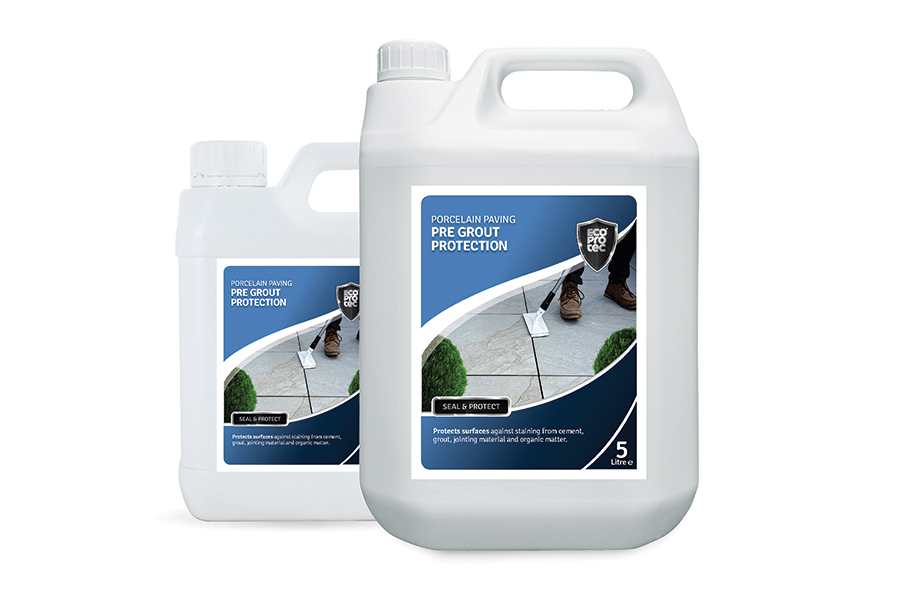With the increasing popularity of porcelain patios, it’s no wonder the discussion surrounding maintenance has increased. And there’s one issue, in particular, that keeps cropping up – should an external porcelain tile be protected and, if so, should a barrier treatment or a sealer be used?
In terms of application of a sealing product, only porcelain tiles with a polished finish need to be sealed. When a porcelain tile is polished, it exposes capillaries which remain porous and exposed. These are effectively lots of microscopic pin holes. If the surface of the tile isn’t sealed, grout and spillages will penetrate quite easily and stain the tile. It’ll also be vulnerable to organic stains once installed.
Matt porcelain tiles, on the other hand, don’t need to be sealed. However, if the tile has a textured surface – which is generally the case in external applications – it will benefit from application of a quality barrier treatment before grouting.
What’s the difference between a sealer and a barrier?
The difference in these two products comes down to the active ingredients.
Says LTP: ‘For example, ECOPROTEC Pre Grout Protection is a barrier treatment designed for use on textured, matt porcelain tiles. It protects the surface of the tile from grout and jointing compound during installation, making it easier for the residue to release and be cleaned out of the textured finish. It’s formulation is very different to that of a sealer.
‘The carrier inside it is mildly acidic. This allows for deeper penetration into the fissures of textured porcelain tiles, where it then dries and leaves the active ingredients behind. As they dry, they cross link within the low points of the glaze. This provides protection against penetration from cement and resin-based grouts, making the removal of any residues much easier.
‘The treatment is completely invisible once cured, so it doesn’t alter the appearance of the porcelain. ECOPROTEC Pre Grout Protection is primarily used as a pre-grout solution, but it can also be applied to help assist with ongoing cleaning and aftercare, especially on external 20mm porcelain paving.’
Polished porcelain sealers have a completely different formula.
As well as having anti stain-based ingredients, they also include a blend of nano waxes that, following application and drying, are polished into the surface mechanically or by hand. Polishing forces the nano wax into the open pores in the polished surface, giving it an enhanced, smoother finish.
Says LTP: ‘For these types of surfaces, we recommend MPG Sealer H2O from our LTP range. The ‘actives’ in ECOPROTEC Pre Grout Protection are too large and won’t penetrate a polished surface as efficiently, so they’ll not work well on this type of surface.
‘Equally, a stone sealer, like our own ECOPROTEC Ultimate Sealer, cannot be used on a textured porcelain surface as it will just dry onto the surface without penetrating. This can often result in a microfilm that remains following application and turns white/opaque when exposed to moisture.’
01823 666213
technical@ecoprotec.co.uk
www.ecoprotec.co.uk
Maintaining porcelain patios: Understanding the difference between barrier treatments and sealers
Please click to view more articles about
> LTP <

